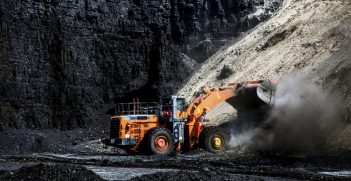Slow Down! The Argument for a Steady State Economy
While governments worldwide strive to maintain or increase economic growth, an international movement is asking the G20 to plot a path towards a steady state economy.
Across the globe, maintaining and increasing growth in gross domestic product is the pre-eminent national policy goal. Yet, there is growing scientific evidence that growth is a major cause of unsustainability and many are questioning the benefits of economic growth. This year the Center for Advancement of the Steady State Economy (CASSE) is requesting that G20 map a path to a steady state economy.
The argument for a steady state economy starts from the understanding that exponential growth in the extraction of physical resources cannot continue indefinitely on a finite planet. The 1972 study, Limits to Growth, identified the risks of continued global growth in resource use and pollution. Frequently misunderstood, the work did not make predictions about future resource exhaustion, but instead modelled a range of scenarios for population growth and resource use. Its main conclusion was that our current path would expand the economy beyond Earth’s capacity to support it and, that after this “overshoot”, production of food and other essential materials would collapse (possibly by the mid 21st century). Dr Graham Turner from the University of Melbourne has recently re-run the Limits to Growth scenarios and found that they have proved accurate over the past 40 years.
Our economic system is totally dependent on the health of natural systems to deliver physical resources and manage our wastes. The analysis Ecological Footprint, undertaken in 2007, found that humans were using ecological services 1.5 times more quickly than the Earth can renew them, causing an ongoing degradation of global natural capital. Twenty-seven scientists co-published a paper in 2009 identifying nine key planetary boundaries as safe limits for human impacts. Four of these boundaries are already being exceeded: climate change, biodiversity loss, phosphorus use and nitrogen use and pollution.
Growth proponents argue for continuing GDP expansion to improve lifestyles, and particularly to provide a decent standard of living to those in the developing world. The record, however, has at best been patchy. In many countries the recent decades of high global economic growth have led to significantly increased wealth disparity: a key correlate of social problems. Over the last three decades, only 10 percent of global wealth generated has flowed to the poorer half of the world’s population. The gross number of people with incomes less than $2 per day has remained similar over that period. Government policy interventions such as land reforms, support of smallholders and social security have generally been more important in addressing hunger than free market-driven economic growth.
Proponents also claim that economic growth is essential to addressing environmental problems, but in reality increasing extraction and pollution associated with economic growth are the causes of our global environmental problems. This fact is largely masked by environmental burden-shifting, with increasing production in the third world of goods consumed in the first world. The poor in developing countries are also much more vulnerable to the current and projected overshooting of global environmental boundaries which are being driven by economic growth.
Economic growth is currently strongly linked to levels of resource throughput and a rising population. A key question is whether economic growth can be absolutely decoupled from resource use and consequent pollution. Not all economic activity relies directly on physical resource use and there are opportunities to improve resource use efficiency significantly. For example, curtailing heat losses from buildings can reduce both heating costs and greenhouse gas emissions. “Cradle to cradle” strategies and adopting circular economies are also highly desirable approaches for reducing the environmental pressures of resource use.
While these strategies in theory could bring human environmental impacts back within safe global boundaries in the short-term, continuing exponential economic growth would likely ensure these boundaries are breached in the long-term. There are two main reasons for this. The first is described by the “Jevons paradox” which identifies that when technological gains improve the efficiency of resource use, consumption of that resource actually rises due to increased demand. The second reason is that to achieve absolute decoupling of economic growth from resource use would require ongoing improvements in resource efficiency at a faster rate than economic growth, and would therefore also need to be exponential in the long-term.
Moving to a steady state economy is therefore proposed as the only viable long-term means of staying within global environmental boundaries. The key elements of a steady state economy are a constant population and a constant low-level economic throughput of material and energy.
Moving to a steady state economy provides the opportunity to return and stay within global environmental boundaries. The steady state economy model also recognises that it is not possible for all of the projected 2100 global population of 11 billion to live sustainably at current developed world levels of consumption. Global footprint analysis indicates this would require more than five “planet Earths”. Enabling the developing world a decent standard of living will require significant reductions in first world levels of resource consumption and pollution, and, possibly, significant global redistribution of wealth.
But moving to a steady state economy does not mean “returning to the Stone Age” and could actually facilitate improved lifestyles and well-being. Health, individual happiness, secure employment, leisure time, strong communities and economic stability are key goals for a steady state economy.
Climate change is now widely considered the single greatest threat to our global civilisation. But it is just one of a number of global environmental threats to our livelihoods driven by exponential growth in consumption and pollution. For these reasons, CASSE is arguing the critical need to start the global transition to a steady state economy.
Jonathan Miller has worked with the Australian Departments of the Environment, Industry and Foreign Affairs and Trade and the ACT Government and as a Senator’s advisor. He is a member of the NSW Chapter of the Centre for the Advancement of the Steady State Economy. This article can be republished with attribution under a Creative Commons Licence.





